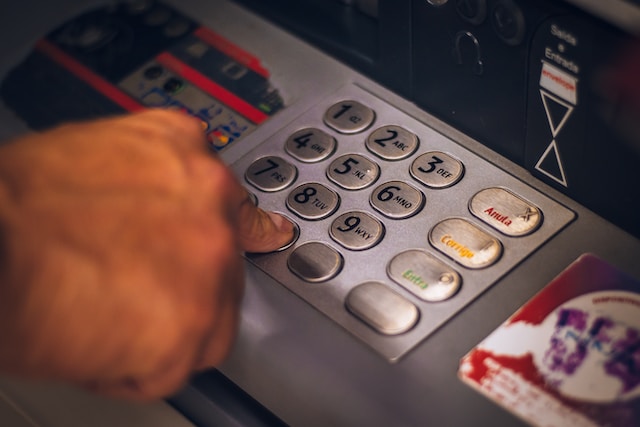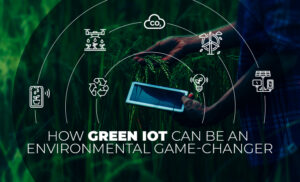Sometimes, investment bankers need help managing their large, complex financial projects. The Internet of Things (IoT) is clearly the tool they need to succeed. Here’s how it’s permanently revolutionizing the industry.
Is the IoT the Future of Banking and Investment?
The IoT has experienced enormous growth in recent years. Experts predict the world will reach a staggering 29.5 billion connected devices by 2030, up from around 15.15 billion in 2023. Considering how useful it is, its rise comes as no surprise to many.
The banking and investment sector is capitalizing on its growth to revolutionize the industry. It needs to be able to react with speed and precision if it’s going to remain successful in modern times, so it needs to invest in powerful technology. Since IoT has those features, it could be the industry’s future.
“The world will reach a staggering 29.5 billion connected devices by 2030.”
How the IoT Is Growing in Investment Banking
This tool is a common choice for companies investing in modern machinery. In fact, the IoT is among the top driving forces in the growth of financial technology. It allows for remote interaction and provides data-driven insights. Plus, it’s very affordable.
Experts project IoT technology will have an impressive compound annual growth rate of 18.58% in the investment banking industry from 2023 to 2028. Since more companies are using it, they’re discovering more specific applications and benefits.
“The IoT is among the top driving forces in the growth of financial technology.”
The IoT in the Investment Banking Sector: 6 Examples
The IoT gives this industry new ways to approach lending, asset management and financial advising. Here are the main ways this technology is breaking boundaries in investment banking.
-
Asset Protection
While the industry often deals with digital investments, some are physical. Previously, many large businesses didn’t have enough resources to monitor each one constantly. However, the IoT enhances asset protection with security improvements. It can collect remote, real-time data, meaning organizations can react to situations even when far away.
IoT sensors are also revolutionary. You can easily monitor multiple objects or an entire room with them. For example, you could place sensors on company-owned real estate to track temperature, pressure, humidity, light and sound. Since this technology has a constant internet connection, you’d get an alert immediately if something unusual happened.
“Being able to potentially predict the future and immediately react to new developments are revolutionary abilities in the financial sector.”
-
Data Analytics
Since the IoT can collect all sorts of information, the investment banking sector can use it to improve their data analytics. For example, sensors can track an asset’s condition, while devices can log user behavior. Both processes happen in real time because of the technology’s constant internet connection.
Investment bankers would have a much easier time making financial decisions if they had plenty of user and market data. They can better advise their clients once they build a large enough collection. Being able to predict the potential future and immediately react to new developments are revolutionary abilities in the financial sector.
-
Fraud Prevention
Fraud losses increased by over 30% from 2020 to 2021. Fortunately, an IoT device is changing the game in two ways. The first involves data collection, where it collects information on client behavior. If investment bankers see unusual activity during a review, it gives them insight and the opportunity to investigate.
In the second method, the company uses the IoT for client transactions. They can decide the operational parameters, requiring people to use biometrics or voice verification before their payments process. You could even set it up to receive alerts whenever money changes hands to minimize the risk of fraud.
-
Risk Management
Improving risk management is among the top ways the IoT revolutionizes investment banking. Investors aren’t blind to risk, but it can be challenging to predict trends without technology. It helps them be sure of their choices, dramatically improving their chances of success.
Imagine if an investor paid $42 per share only to resell at $36 because they overvalued a client. Unfortunately, this kind of scenario is common. However, the introduction of the IoT changes things. It can enhance their data collection processes and provide real-time market insight, vastly improving their risk management strategy.
-
Cybersecurity
Globally, the financial sector experienced over 1,800 cybersecurity incidents and 477 data breaches in 2022 alone. Since it is among the most likely industries to be targeted by cyber attacks, they need to protect their clients and — by extension — their investments.
Fortunately, the IoT can improve cybersecurity similarly to how it enhances fraud prevention. If investment banking companies require their connected payment portal app to verify someone’s face, voice or fingerprints, it prevents hackers from stealing money remotely.
-
Debt Prevention
Sometimes, the risk of doing business is more significant than you first thought. When investments go sideways and the client can no longer pay, organizations usually have to give up on seeing returns. Luckily, one of the most promising ways the IoT revolutionizes the sector is through debt prevention and collection.
Investment bankers can use the data collection capabilities of the IoT to build a profile for each client. It can give them crucial insight into how risky an individual is financially. They can also remotely communicate whenever payments fall behind, maximizing the chances for debt prevention.
The Innovative Power of IoT
IoT devices can track an asset’s condition, enhance remote interactions and collect crucial data on clients and trends. It should be no surprise how revolutionary it is in the banking and investment sector.









